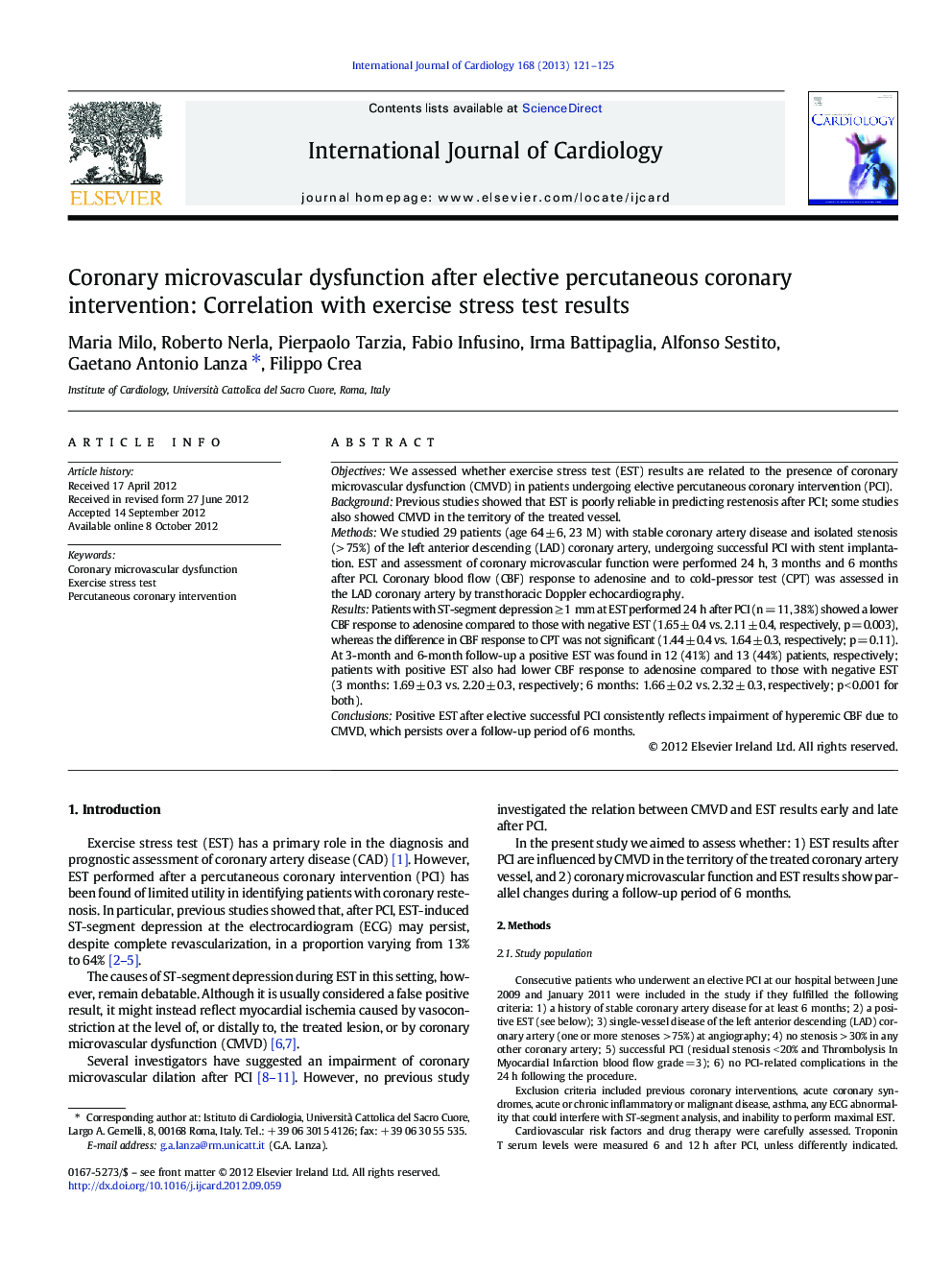| Article ID | Journal | Published Year | Pages | File Type |
|---|---|---|---|---|
| 5976574 | International Journal of Cardiology | 2013 | 5 Pages |
ObjectivesWe assessed whether exercise stress test (EST) results are related to the presence of coronary microvascular dysfunction (CMVD) in patients undergoing elective percutaneous coronary intervention (PCI).BackgroundPrevious studies showed that EST is poorly reliable in predicting restenosis after PCI; some studies also showed CMVD in the territory of the treated vessel.MethodsWe studied 29 patients (age 64 ± 6, 23 M) with stable coronary artery disease and isolated stenosis (> 75%) of the left anterior descending (LAD) coronary artery, undergoing successful PCI with stent implantation. EST and assessment of coronary microvascular function were performed 24 h, 3 months and 6 months after PCI. Coronary blood flow (CBF) response to adenosine and to cold-pressor test (CPT) was assessed in the LAD coronary artery by transthoracic Doppler echocardiography.ResultsPatients with ST-segment depression â¥Â 1 mm at EST performed 24 h after PCI (n = 11, 38%) showed a lower CBF response to adenosine compared to those with negative EST (1.65 ± 0.4 vs. 2.11 ± 0.4, respectively, p = 0.003), whereas the difference in CBF response to CPT was not significant (1.44 ± 0.4 vs. 1.64 ± 0.3, respectively; p = 0.11). At 3-month and 6-month follow-up a positive EST was found in 12 (41%) and 13 (44%) patients, respectively; patients with positive EST also had lower CBF response to adenosine compared to those with negative EST (3 months: 1.69 ± 0.3 vs. 2.20 ± 0.3, respectively; 6 months: 1.66 ± 0.2 vs. 2.32 ± 0.3, respectively; p < 0.001 for both).ConclusionsPositive EST after elective successful PCI consistently reflects impairment of hyperemic CBF due to CMVD, which persists over a follow-up period of 6 months.
